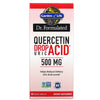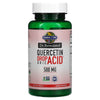No products in the cart.
Springtime "Feel Good" Package
Mullein:
- The herb Mullein has been cultivated in Scotland and England for centuries as a medicinal herb. Historically it was used for respiratory issues like coughs, lung conjestion, brochitis and nasal congestion.
- Mullein contains a good amount of potassium and calcium phosphate.
- These two organic salts are essential for rebuilding tissue, nervous system function, bone structure and in maintaining general health and well-being.
- Mullein leaves and flowers are classified in traditional herbal literature as expectorants (promotes the discharge of mucus) and demulcents (soothes irritated mucous membranes). Historically, mullein has been used by herbalists as a remedy for the respiratory tract, particularly in cases of irritating coughs with bronchial congestion.
- Mullein is an excellent herb for the respiratory system, and has been known as an astringent, which opens air passages by shrinking irritated areas, allowing air to flow more freely through the respiratory system.
- Mullein is known by other names in other ancient cultures. The people of Rome and Ireland called it "lungwort" because they used it to cure lung disease in both humans and livestock (Muenscher, 1935; DeBray, 1978).
- "Mullein contains approximately 3% mucilage and small amounts of saponins and tannins. The mucilaginous constituents are thought to be responsible for the soothing actions on mucous membranes. The saponins may be responsible for the expectorant actions of mullein." University of Michigan Medical Health Article
- Mullein has a long history of traditional use for respiratory issues and is currently being studied for more information.
- The herb Elcampane is categorized as a diuretic, tonic, expectorant, alterative, astringent and is a gentle stimulant.
- "The traditional uses in herbal medicine it is chiefly for coughs, consumption and other pulmonary complaints, being a favourite domestic remedy for bronchitis. It has been employed for many hundreds of years with good results in chest affections." ( A Modern Herbal Botanical )
- One of the classifications of Elcampane is an expectorant. An expectorant is defined as an herb that expels mucus.
- It is also an astringent which is said to shrink or contract skin. Some herbalists use astringents on swollen mucous membranes.
- The traditional uses of Bayberry are for head colds, circulatory system stimulation, as a gargle for sore throats, as an ointment for skin ulcers, Diarrhea and even nausea.
- Bayberry contains tannins that have a drying effect on skin and membranes.
- On classifications for Bayberry is as an astringent.
- Bayberry contains an active flavonoid called Myricetin. It is extracted from the barks, leaves, and roots of the plant known as myrica rubrae (Bayberry). It is very well known for the biologic effect of antioxidant and radical scavenge activities.
- During the 19th century Samuel Thomson, a New England herbalist and father of 'physiomedicalism' described Bayberry as second only to red pepper for producing 'heat' within the body. Thomson recommended it for colds, flu, diarrhoea, fever and infectious disease and most particularly as an agent to increase the 'vital force', related to the body's intrinsic ability to heal itself.
Euphrasia Offinalis (Eyebright):
- Eyebright is a plant. The parts that grow above the ground have been used traditionally to make medicine.
Some of the traditional uses are as follows:- Eyebright is taken by mouth to treat swollen (inflamed) nasal passages, allergies, hay fever, common cold, bronchial conditions, and inflamed sinuses (sinusitis). It is also used for coughs, “pink eye” (conjunctivitis), earaches, epilepsy, headaches, hoarseness, inflammation, jaundice, runny nose, skin ailments, and sore throat. (THERE ARE NO STUDIES THAT PROVE THE EFFECTIVENESS OF EYEBRIGHT FOR THE ABOVE CONDITIONS)
- Euphrasia officinalis (Eyebright) is traditionally used for eye inflammation.
- So many allergies are related to eye irritation that one of the ways that herbalists have used Eyebright is to deal with eye irritation that comes with a seasonal allergy.
- Eyebright has been tested for efficacy on corneal cells in human eyes. The results/ conclusion below are quoted from this study (Euphrasia Officanlis Study):
- "All tested extracts decreased pro-inflammatory cytokine expression (IL-1β, IL-6 and TNF-α) and also anti-inflammatory IL-10 expression by human corneal cells."
Lutein:
- Lutein is called a carotenoid vitamin. It is related to beta-carotene and vitamin A. Foods rich in lutein include broccoli, spinach, kale, corn, orange pepper, kiwi fruit, grapes, orange juice, zucchini, and squash.
- Lutein may activate branches of the immune system that suppress chronic inflammation" (Article: Newly Discovered Benefits of Lutein). This is an analysis of 4377 studies with more than 387,000 participants.
- Lutein and zeaxanthin belong to the large class of plant pigments referred to as carotenoids. They are more polar than many other carotenoids, due to the presence of hydroxyl groups on the cyclic ring structure.
Goldenseal Root:
- Goldenseal is a plant native to North America.
- Historically, Native Americans used goldenseal for skin disorders, ulcers, fevers, and other conditions.
- European settlers adopted it as a medicinal plant. They used it for a variety of conditions ranging from respiratory issues to stomach ailments like ulcers.
- Currently, herbalists have continued the traditional uses of goldenseal as a dietary supplement for colds and other respiratory tract infections, allergic rhinitis (hay fever), ulcers, and digestive upsets such as diarrhea and constipation.
- It is also used as an eyewash for eye inflammation.
- The roots of goldenseal are dried and used to make teas, extracts, tablets, or capsules. Goldenseal is often combined with echinacea in commercial products.
- What science has found out about goldenseal that makes it so useful for your health?
- There are four active alkaloids that it contains, namely hydrastine, palmatine, canadine and berberine.
- Berberine, in particular, has anti-inflammatory, antibacterial, antifungal and immune-boosting properties. (Acta Pharmacol Sin. 2017 Feb; 38(2): 157–167)
Herbs like these are extremely important for your health and well-being!
The studies sited above are for informational purposes only. They do not reflect or relate to the performance or purpose of any products that contain similar materials.
-
Aller G Defense Ingredients: Euphraisia
herba (herb), Myrtilli Fructus (herb), Myricaceae (bark), Red Raspberry (leaf & pulp), Golden Seal (root), Lutein, Rue (herb), Labiatae (herb), Fennel (seed), Matricaria (flower), Cayenne Pepper - Respiratory Ingredients: Mullein (leaf), Bayberry (bark), Horehound (leaf), Bladder Pod (herb), Heal All (herb), Elecampane (root), Yerba Santa (herb), Plantain (herb), Nettle (leaf), Coltsfoot (flower), Cayenne (fruit 40 HU), Lungwort (herb)
-
Aller G Defense: Take 3 Capsules each morning and 3 capsules each
night . - Respiratory: Take 2 Capsules 3 times a day 1/2 hour before meals when possible. May use more as needed.
- Two of the best seasonal formulas Grandma's Herbs has to offer.
- ALLER G DEFENSE:
- Promotes a healthy immune system's function
- All natural herbs in their natural form. No concentrates, no extra processing. Just herbs tthat have been dried and gound up into an ultra fune powder for the quick release of their healthy properties.
- RESPIRATORY:
- Promotes healthy lung function.
-
The Springtime "Feel Good" Package
- Promotes healthy lung and immune system function.
A ONE , TWO punch during those times when pollens fly and breathing becomes difficult.
- Promotes healthy lung and immune system function.













